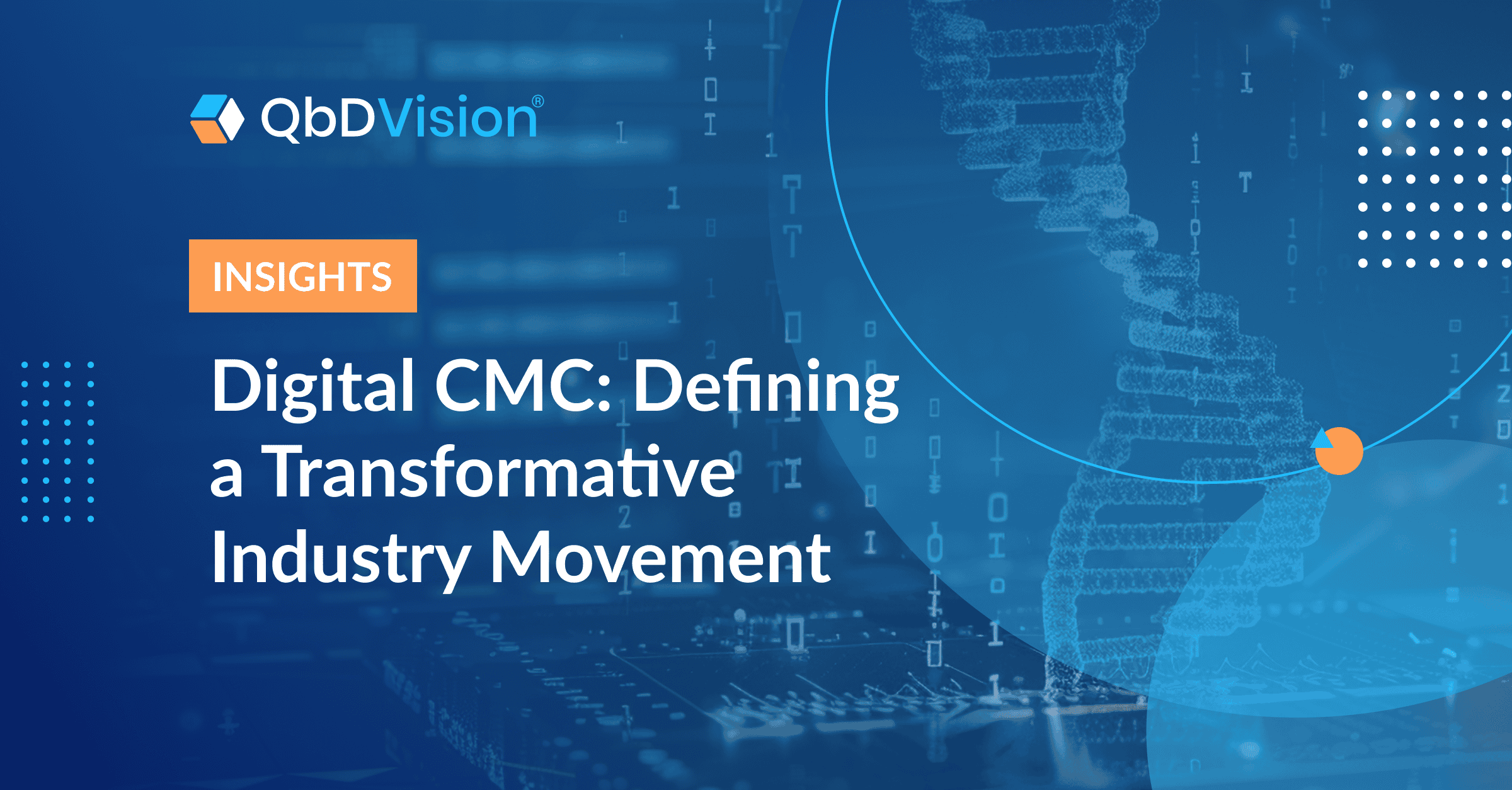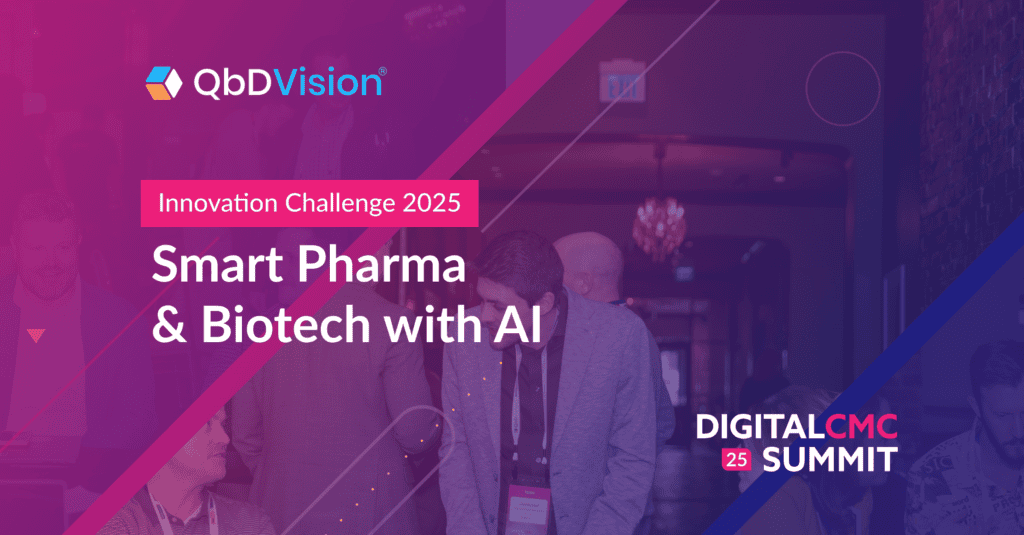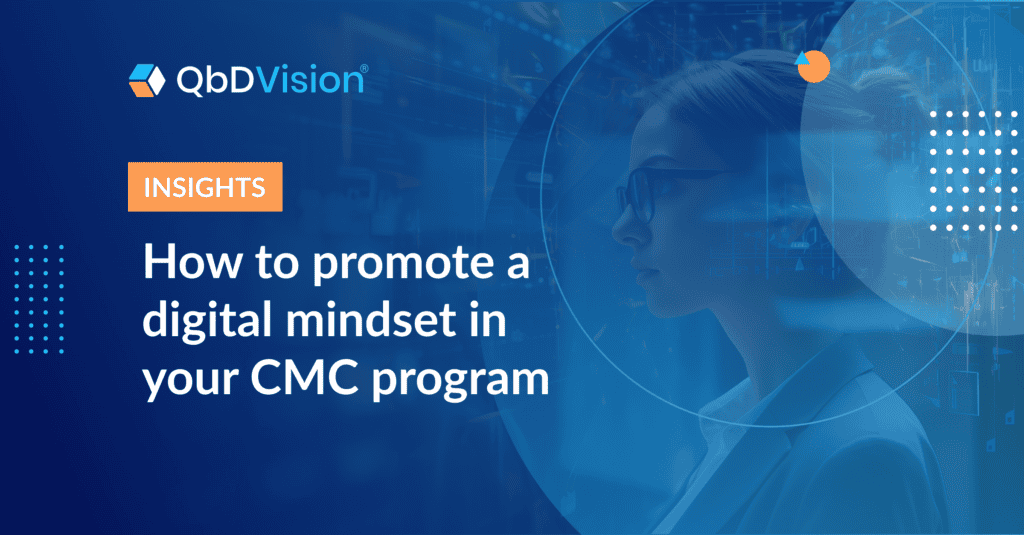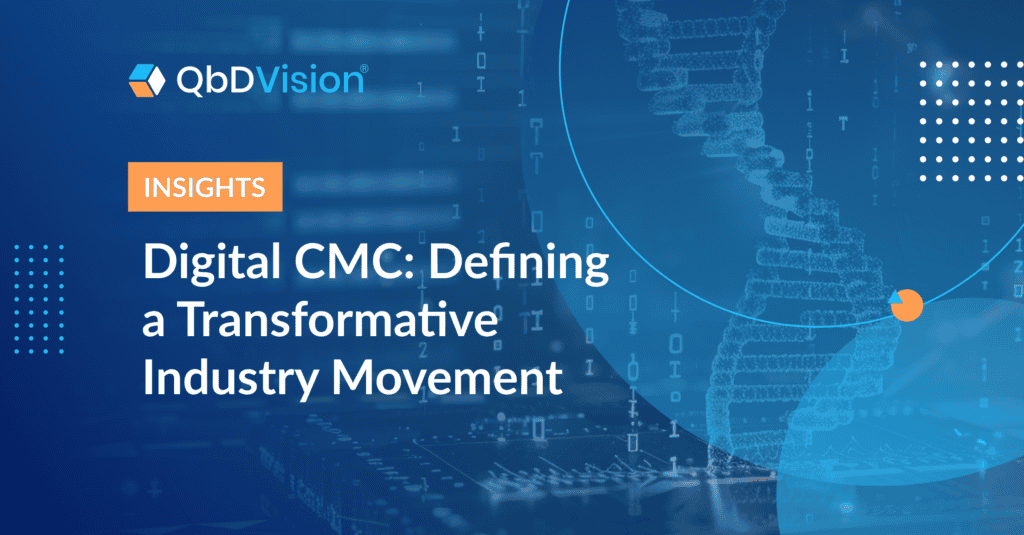It’s a key function of fully modernized drug development organizations. It’s a trend transforming critical steps in the drug development process. It’s a framework adopted by some of the industry’s biggest strategic players. It’s the focus of a marquee annual summit and has a dedicated global event series.
And yet, it still often raises a very simple question: What is Digital CMC anyway?
Very glad you asked, because it’s an answer we love digging into. Let’s take a closer look at this game-changing trend in drug development, what it really is, what it’s not, and how it’s helping more and more drug developers accelerate new products to patients.
Background: Why the industry needs a new evolution of CMC
First off, let’s answer the question behind the question: Why does drug development need a new/different/better version of its CMC function, digital or otherwise?
Well if you’ve been following our blog, you probably know the answer: Where do we begin?
Here’s the shortlist of why many CMC programs have recently been struggling with efficiency, productivity, and compliance, and why the CMC function has increasingly become the culprit in many development delays:
- Inefficient, document-based processes
- Vast volumes of unstructured, de-contextualized data
- Information infrastructure that’s woefully ill-prepared for the deluge of data flowing into the drug development domain
- Siloed teams, units, and functions that struggle to collaborate or share information
- Lack of knowledge management SOPs that leads to endemic levels of implicit knowledge
And if you’ve tried to find a specific parameter on your TechDev SharePoint recently, you know that list is the Reader’s Digest version.
So, it’s no surprise that CMC programs are facing pressure to adapt, evolve, and transform, and feeling it from multiple directions. Markets are growing restless at the continuing stagnation of R&D productivity. Regulators are actively driving the shift to structured submissions. An ever-growing range of technologies is swamping CMC programs with a deluge of data—one legacy processing methods can’t hope to keep up with.
The signal is clear: It’s time for CMC to escape from its legacy process, methods, and limitations and become a tech-enabled, data-powered engine that powers truly high-performance drug development. Call it CMC 2.0. Or better yet: Digital CMC.
Brass tacks: Digital CMC is a whole new way to organize, integrate, and leverage technical development knowledge
Like any domain as complex as CMC, it takes many converging forces to steer the industry’s technical development functions in a new, modern direction. That’s why Digital CMC is a multidimensional, multidisciplinary landscape that unites an array of technologies, capabilities, and teams.
Simply put, though: Digital CMC is a structured approach to aggregating and organizing technical development information that enables vertical integration of CMC knowledge and automation of development workflows across a product’s lifecycle. It’s much more than analytics, data management, or “cloud for drug development.” It’s a comprehensive strategic framework for modernizing an essential development function—and one that can be applied to any therapeutic modality.
While this approach can take many forms, successful Digital CMC programs have a few defining characteristics:
- A strong focus on knowledge management: Digital CMC programs treat their data, information, and know-how as more than assets on SharePoint. The see them as dimensional, connectable, contextualized knowledge resources that belong to the whole organization—not static documents or objects locked in a digital file cabinet. For these programs, structuring their data—transforming it from isolated outputs to a node in a knowledge network—is as important as producing it.
- Clear lifecycle strategies: These programs know that modernizing CMC means thinking beyond the next experiment, analysis, or phase, and developing a holistic understanding of how their workflows connect, overlap, and complement each other across the product lifecycle. They don’t think in terms of discrete data threads: They see a digital fabric of CMC knowledge that extends across their organization.
- A shift away from documents: Adopting Digital CMC means breaking free from the versioned PDFs, Word docs, presentations, and email attachments that have bogged down generations of technical development. Modernized CMC programs are built on a foundation of well-structured, readily accessible knowledge and data that enables them to accelerate their processes and streamline their outputs.
- Robust information infrastructure: Digital CMC programs aren’t just smart about how they produce knowledge and data, they’re smart about how and where they manage it. That means having clear, comprehensive SOP’s and a modern cloud-based system for capturing, curating, and distributing their program’s information.
- A drive toward standardization: Digitized CMC functions still unite many different functions, units, and workflows. But they do so using a connected ecosystem of integrated technologies powered by shared, free-flowing data—not a daisy chain of point solutions stocked with isolated datasets.
- Effective change management: More than anything, Digital CMC leaders know they’re asking their teams to make big changes from how technical development has traditionally worked. And they’re prepared to manage that change with strategies that support sustaining organizational adoption of Digital CMC tools and methods.
That’s a LOT underlying the big idea of transforming CMC. So why are all these attributes essential to digitizing CMC?
Because no technological innovation—no revolutionary analytics, no time-saving automation, and certainly no game-changing AI—can make a lasting, sustainable impact without every one of these factors. Fundamentally, Digital CMC requires not only modern technology, but also a strong deployment strategy and an innovation-ready business culture.
So what’s the value of orchestrating all those factors? That’s where things get really exciting.
The signals are clear: It’s time for CMC to escape from its legacy process, methods, and limitations and become a tech-enabled, data-powered engine that powers truly high-performance drug development. Call it CMC 2.0. Or better yet: Digital CMC.
The benefits: What Digital CMC unlocks for the industry
Once all the right technological, strategic, and cultural elements are in place, Digital CMC programs can deliver a host of benefits for the organizations that establish them—and help those businesses get new therapies to patients faster than ever.
Here are just a few of the highlights:
- Dramatically increased efficiency: Digital CMC programs have enabled users to complete key workflows 3X faster and shave 6 months off critical timelines.
- Knowledge with vastly greater value and utility: Curating CMC knowledge with modern data management principles transforms that information from siloed unit-level artifacts to a powerful organizational resource.
- Broken operational bottlenecks: Including transformative acceleration of tech transfer processes.
- Potentially massive time/cost savings: To the tune of 75% reduction in internal tech transfer costs and 80% reduction in labor costs for average site-to-site tech transfers.
- Powerful automation: Automation solutions enabled by structured CMC data have helped users reduce their reporting timelines by as much as 95%.
- Improved compliance: Adopting Digital CMC methodologies is a key step in preparing for required documentation and traceability components of M4Q(R2) and the FDA’s updated PAI program.
Each of these benefits is a very real outcome of successfully adopting Digital CMC, and they’re all unlocked by implementing the right combination of digital solutions, deployment strategies, and cultural adaptation initiatives.
Ultimately, the right tech stack is just one critical piece of that puzzle—but at the same time, it’s an essential one. So let’s take a look at a few key solutions that many Digital CMC programs rely on.
Enabling technologies: What’s in the Digital CMC toolkit?
In a domain as cross-functional and interdisciplinary as CMC, it’s no surprise that the Digital CMC tech stack is equally diverse. Innovators and leaders in this space are already leveraging a wide variety of solutions and orchestrating them in just as many different ways.
The first generation of these solutions typically focused on bringing baseline digital capabilities and consolidating fragmented technical development data. While some of these solutions were purpose-built for the iterative needs of technical development, others were often reverse-engineered from commercial-scale enterprise systems—lowering their utility in more investigational CMC workflows.
Today, though, Digital CMC programs are increasingly building their capabilities on versatile lifecycle platforms with a fast-growing array of functions, all powered by structured CMC data.
QbDVision was one of the first technologies to break ground in this area, and continues to offer a market-leading set of capabilities for Digital CMC programs—from foundational knowledge management functions to advanced risk analysis and visualization, process automation, tech transfer capabilities, and more.
Once all the right technological, strategic, and cultural elements are in place, Digital CMC programs can deliver a host of benefits for the organizations that establish them—and help those businesses get new therapies to patients faster than ever.
What Digital CMC is not: Deploying a tool or solution
We probably don’t need to say it, but, as they say, “we’ll say it ‘cause we’ve seen it”: Digital CMC is not simply using digital tools to handle CMC workflows.
It’s not plugging an analytics suite, a “data backbone,” or PLM platform into a CMC program and hoping it’s sticky. It’s a holistic way to organize, manage, and leverage outputs from CMC workflows—using digital tools to enable that approach.
Ask any CMC leader who’s tried to implement a new technology in their program, and they’ll tell you why this point is critical. As we’ve often heard at the Digital CMC Summit, technology is an enabling tool—not transformation in a cloud-based box. Fully realized Digital CMC is a combination of organizational, cultural, procedural, and technological shifts that streamline workflows critical to bringing patients the therapies they need.
That version of Digital CMC takes a lot more sustained and strategic effort to achieve, but the results are absolutely worth it. Oh, and you’ll still get to use some really cool technology.
The big takeaway: Digital CMC is essential to the future of drug development
Even as the field of Digital CMC continues to rapidly evolve, one thing is already clear: It’s more than a new technology trend in technical development. It’s a global movement driving fundamental shifts in how manufacturing processes are developed, exchanged, and implemented.
Our QbDVision team is proud to have been at the forefront of that movement since it first gained momentum. Today, we’re excited to see Digital CMC itself transform: from exploratory deployments and bold pilot programs to enterprise-scale initiatives launched by some of the world’s top companies in the industry.
And that’s just the beginning. This year, look for Digital CMC to become even more vital for businesses seeking to become high-performance drug development organizations that can bring new therapies to patients with unprecedented speed. The foundations are already there. It will be amazing to see what a new generation of pharma and biotech innovators will build on them!
GET IN TOUCH
Ready to join that global movement?
We’d love to help you get started. Reach out to our experts at any time to learn how we can help you modernize your CMC processes and outputs.


























































